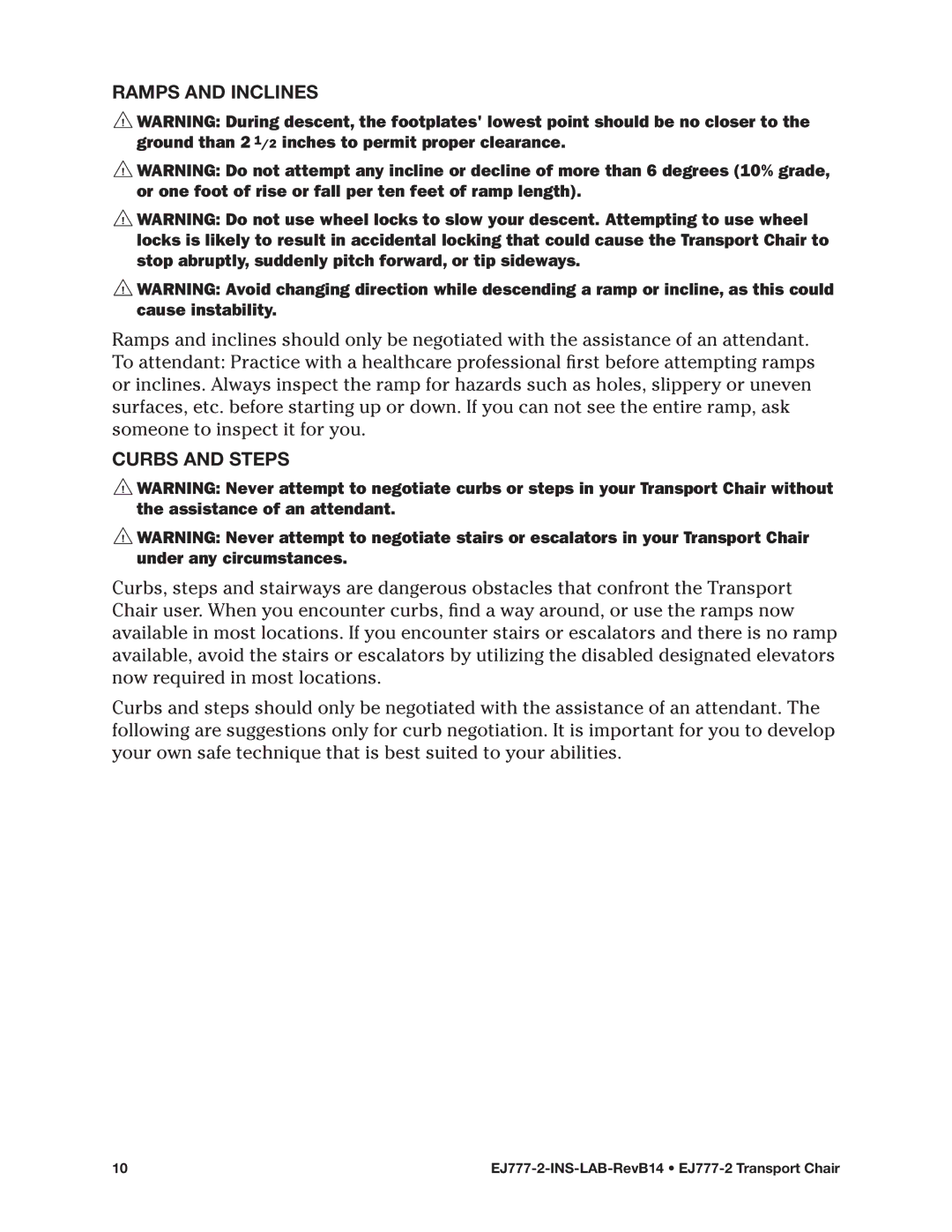RAMPS AND INCLINES
![]() WARNING: During descent, the footplates' lowest point should be no closer to the ground than 2 1/2 inches to permit proper clearance.
WARNING: During descent, the footplates' lowest point should be no closer to the ground than 2 1/2 inches to permit proper clearance.
![]() WARNING: Do not attempt any incline or decline of more than 6 degrees (10% grade, or one foot of rise or fall per ten feet of ramp length).
WARNING: Do not attempt any incline or decline of more than 6 degrees (10% grade, or one foot of rise or fall per ten feet of ramp length).
![]() WARNING: Do not use wheel locks to slow your descent. Attempting to use wheel locks is likely to result in accidental locking that could cause the Transport Chair to stop abruptly, suddenly pitch forward, or tip sideways.
WARNING: Do not use wheel locks to slow your descent. Attempting to use wheel locks is likely to result in accidental locking that could cause the Transport Chair to stop abruptly, suddenly pitch forward, or tip sideways.
![]() WARNING: Avoid changing direction while descending a ramp or incline, as this could cause instability.
WARNING: Avoid changing direction while descending a ramp or incline, as this could cause instability.
Ramps and inclines should only be negotiated with the assistance of an attendant. To attendant: Practice with a healthcare professional first before attempting ramps or inclines. Always inspect the ramp for hazards such as holes, slippery or uneven surfaces, etc. before starting up or down. If you can not see the entire ramp, ask someone to inspect it for you.
CURBS AND STEPS
![]() WARNING: Never attempt to negotiate curbs or steps in your Transport Chair without the assistance of an attendant.
WARNING: Never attempt to negotiate curbs or steps in your Transport Chair without the assistance of an attendant.
![]() WARNING: Never attempt to negotiate stairs or escalators in your Transport Chair under any circumstances.
WARNING: Never attempt to negotiate stairs or escalators in your Transport Chair under any circumstances.
Curbs, steps and stairways are dangerous obstacles that confront the Transport Chair user. When you encounter curbs, find a way around, or use the ramps now available in most locations. If you encounter stairs or escalators and there is no ramp available, avoid the stairs or escalators by utilizing the disabled designated elevators now required in most locations.
Curbs and steps should only be negotiated with the assistance of an attendant. The following are suggestions only for curb negotiation. It is important for you to develop your own safe technique that is best suited to your abilities.
10 |
|
